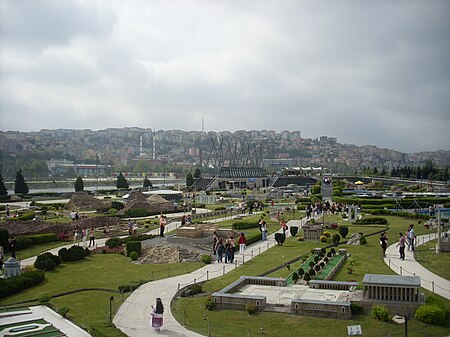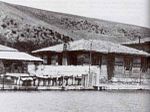Miniatürk

Miniatürk is a miniature park at the northeastern shore of Golden Horn in Istanbul, Turkey. It opened May 2, 2003. It is one of the world's largest miniature parks, with a 15,000 m2 (160,000 sq ft) model area and total area of 60,000 square metres (650,000 sq ft). It contains 135 models, in 1:25 scale, of structures from in and around Turkey, and interpretations of historic structures. Of the park's total area, 40,000 m2 (430,000 sq ft) is open space; 3,500 m2 (38,000 sq ft) is covered; and 2,000 m2 (22,000 sq ft) contain pools and waterways. Its parking lot has a capacity of 300 vehicles. 60 of the park's structures are from Istanbul, 63 are from Anatolia, and 13 are from the Ottoman territories that today lie outside Turkey. Also featured are historic structures like the Temple of Artemis at Ephesus, and the Mausoleum of Maussollos at Halicarnassus (now Bodrum). Additional space is reserved for future models.
Excerpt from the Wikipedia article Miniatürk (License: CC BY-SA 3.0, Authors, Images).Miniatürk
Otopark İçi Yollar,
Geographical coordinates (GPS) Address External links Nearby Places Show on map
Geographical coordinates (GPS)
| Latitude | Longitude |
|---|---|
| N 41.06 ° | E 28.948611111111 ° |
Address
Miniatürk
Otopark İçi Yollar
34445 (Örnektepe Mahallesi)
Türkiye
Open on Google Maps





